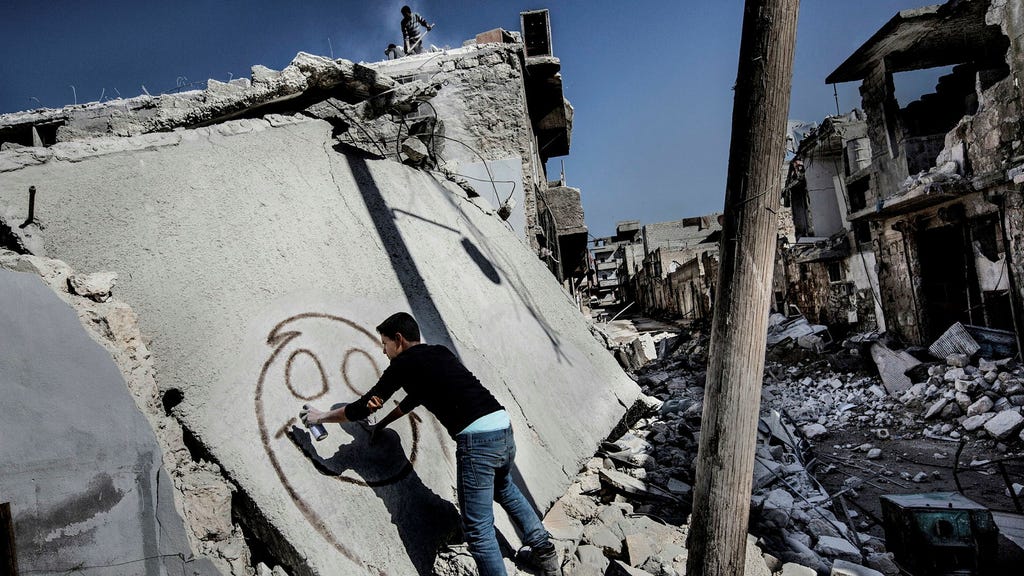2011: The Spark of Revolution
The Syrian uprising began in 2011, ignited by the wave of pro-democracy protests sweeping across the Arab world. President Bashar al-Assad’s regime responded with brutal force, violently suppressing demonstrations and sparking armed resistance. This brutal crackdown led to the formation of various armed opposition groups, some composed of Syrian army defectors, united by the common goal of overthrowing Assad. However, these groups were fragmented, representing a spectrum of ideologies and receiving support from different foreign powers, including Turkey, Saudi Arabia, the United Arab Emirates, and the United States. This external involvement further complicated the conflict, fueling rivalries and hindering unified action.
2014: The Rise of Extremism and International Intervention
By 2014, the anti-government forces had made significant gains. Simultaneously, Assad’s allies, Russia and Iran, escalated their support, deploying military personnel and providing airpower. Iran’s Revolutionary Guard Corps (IRGC) and Lebanese Hezbollah joined the ground fight alongside Syrian government forces. Russia provided crucial air support to the Syrian regime, bolstering its capabilities and turning the tide of the conflict. This period also saw the rise of extremist groups like al-Qaeda and ISIS, who exploited the chaos to gain territory and influence. The involvement of ISIS led to a US-led coalition intervention aimed at containing the extremist threat, adding another layer of complexity to the already multifaceted war.
2015-2016: Humanitarian Crisis and Escalation of Violence
The conflict’s impact reached far beyond Syria’s borders. In 2015, millions fled the country, along with refugees from Afghanistan and Africa, seeking asylum in Europe. This mass exodus created a humanitarian crisis, with many perishing in the perilous journey across the Mediterranean. It also sparked a political crisis within the EU, dividing member states on how to manage the influx of refugees. Within Syria, the violence intensified, with devastating consequences for civilians. The siege of Aleppo, marked by relentless bombing campaigns by government forces with Russian support, exemplified the brutality of the war. The humanitarian cost of the conflict was staggering, with hundreds of thousands killed and millions displaced.
2019-2020: Shifting Alliances and Fragile Truces
In 2019, the US-led coalition, in partnership with the Syrian Democratic Forces (SDF), largely composed of Kurdish fighters, succeeded in defeating ISIS territorial control. This victory, however, did not bring an end to the conflict. In 2020, Russia and Turkey brokered a ceasefire in Idlib, the last remaining rebel-held province. This agreement established a security corridor and joint patrols, offering a glimmer of hope for de-escalation. However, underlying tensions remained, and the situation remained fragile.
2024: Renewed Conflict and Uncertain Future
The relative calm of the preceding years shattered in November 2024 when a new rebel coalition launched an offensive, rapidly capturing territory around Aleppo, Syria’s most populous city. This resurgence of fighting highlighted the persistent instability and the unresolved issues at the heart of the conflict. The rebels’ swift advance exposed the weakened state of Assad’s forces and raised questions about the long-term viability of the regime. The renewed fighting also underscored the ongoing involvement of external actors, with Turkey playing a pivotal role in supporting the rebel offensive.
The Syrian Conflict: A Complex Web of Actors and Interests
The Syrian conflict has evolved into a protracted and multi-layered war, involving various state and non-state actors with competing agendas. The involvement of regional and global powers, including Russia, Iran, Turkey, the US, and Israel, transformed the conflict into a proxy war, further complicating efforts to achieve a peaceful resolution. The presence of numerous militias, jihadist groups, and the ongoing struggle for power and influence have created a complex and volatile landscape. The humanitarian crisis continues to deepen, with millions in need of assistance and facing dire circumstances. The future of Syria remains uncertain, with the possibility of continued conflict and instability looming large.














